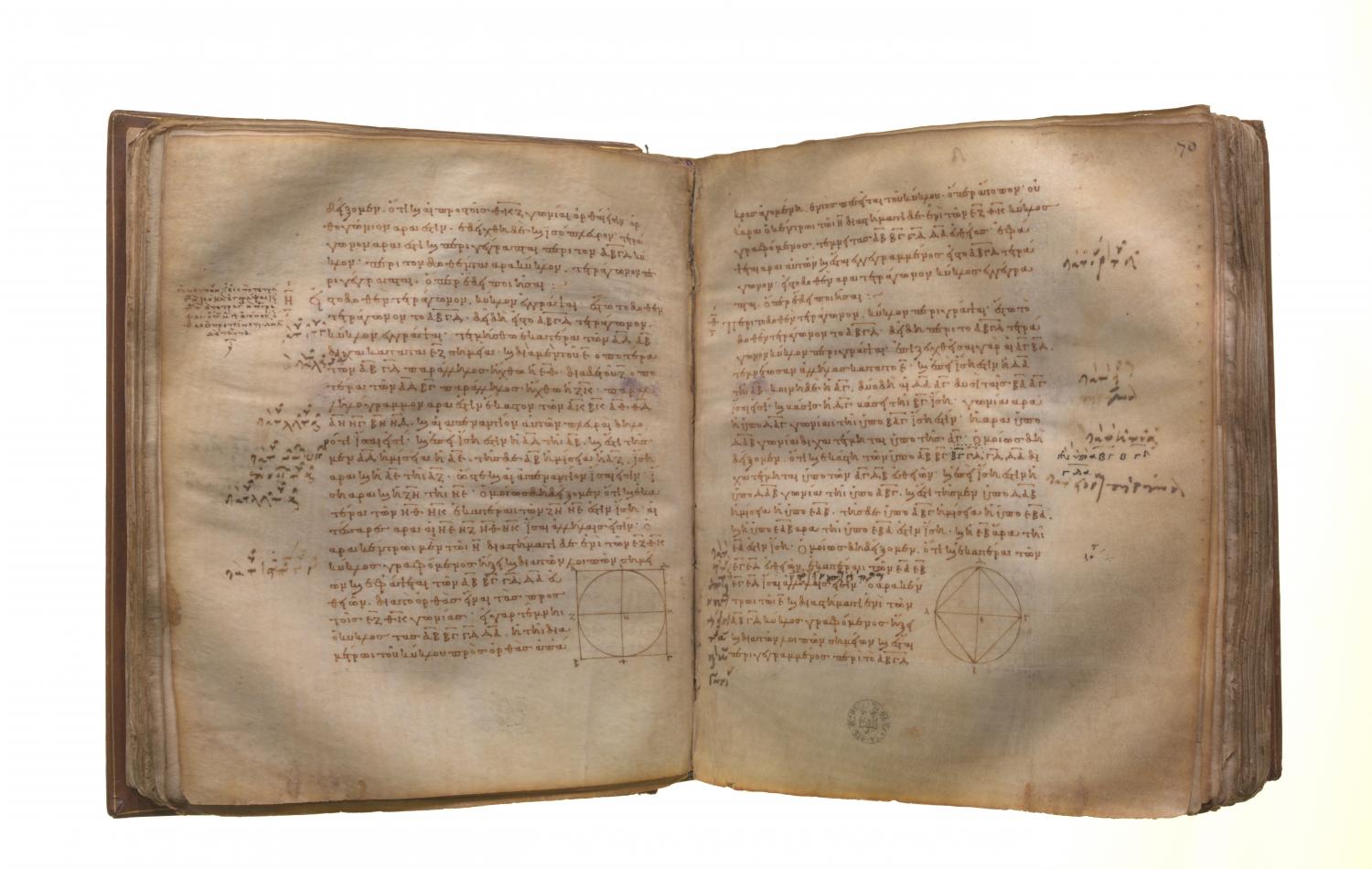Translations
In a given square to inscribe a circle. Let ABCD be the given square; thus it is required to inscribe a circle in the given square ABCD. Let the straight lines AD, AB be bisected at the points E, F respectively [I. 10], through E let EH be drawn parallel to either AB or CD, and through F let FK be drawn parallel to either AD or BC; [I. 31] therefore each of the figures AK, KB, AH, HD, AG, GC, BG, GD is a parallelogram, and their opposite sides are evidently equal. [I. 34] Now, since AD is equal to AB, and AE is half of AD, and AF half of AB, therefore AE is equal to AF, so that the opposite sides are also equal; therefore FG is equal to GE. Similarly we can prove that each of the straight lines GH, GK is equal to each of the straight lines FG, GE; therefore the four straight lines GE, GF, GH, GK are equal to one another. Therefore the circle described with centre G and distance one of the straight lines GE, GF, GH, GK will pass also through the remaining points. And it will touch the straight lines AB, BC, CD, DA, because the angles at E, F, H, K are right. For, if the circle cuts AB, BC, CD, DA, the straight line drawn at right angles to the diameter of the circle from its extremity will fall within the circle: which was proved absurd; [III. 16] therefore the circle described with centre G and distance one of the straight lines GE, GF, GH, GK will not cut the straight lines AB, BC, CD, DA. Therefore it will touch them, and will have been inscribed in the square ABCD.
